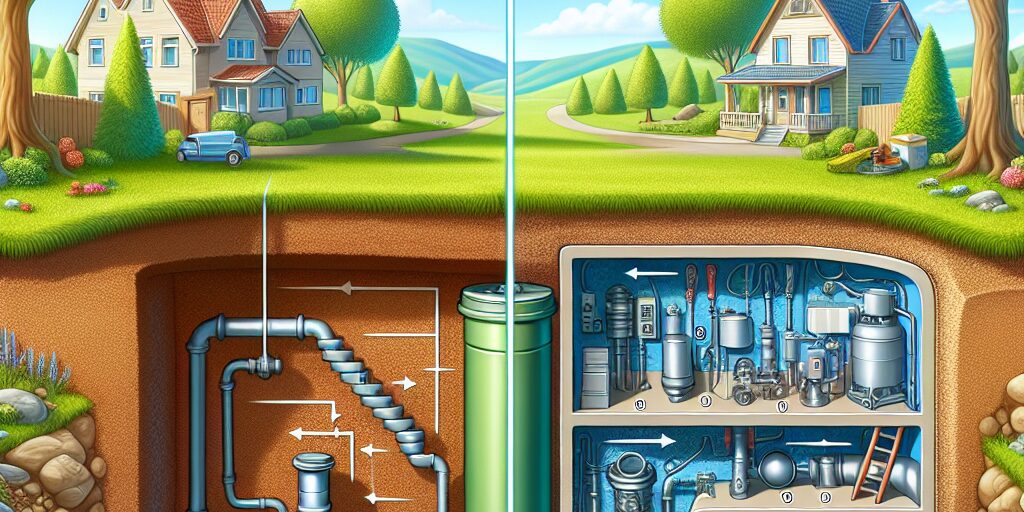What Are the Differences Between HSTPs and Traditional Septic Tanks?
Home sewage treatment plants (HSTPs) and traditional septic tanks represent two distinct approaches to managing household wastewater. These systems differ significantly in their treatment capabilities and environmental impact. While traditional septic tanks have been the standard for decades, HSTPs offer advanced technological solutions for waste management. Understanding the key differences can help homeowners make informed decisions about their property’s wastewater treatment. Modern environmental challenges require more sophisticated approaches to managing household water systems.
Key Takeaways
- HSTPs provide advanced three-stage treatment processes
- Installation costs range between $10,000 to $20,000
- Annual maintenance for HSTPs is higher but more comprehensive
- Systems offer superior environmental protection
- Ideal for rural and remote locations

Treatment Capacity and Environmental Performance
Home sewage treatment plants excel in advanced wastewater management techniques. These systems utilize a sophisticated three-stage process that dramatically improves treatment efficiency. The first stage involves mechanical filtration, removing solid particles and debris from wastewater. Biological processing follows, where beneficial bacteria break down organic materials more effectively than traditional systems.
Mechanical processes in HSTPs ensure superior contaminant removal. Unlike standard septic tanks, these systems can produce non-polluting effluent suitable for above and below-ground release. This capability significantly reduces environmental contamination risks. By preventing groundwater and surface water pollution, HSTPs offer substantial ecological advantages.
Installation and Cost Considerations
Installing an HSTP represents a significant investment for homeowners. Costs typically range from $10,000 to $20,000, comparable to traditional septic tank installations. The price varies based on several crucial factors, including system type, tank size, and local regulatory requirements. While the initial expense might seem high, the advanced treatment capabilities justify the investment.
Specific system components contribute to the overall cost structure. Advanced filtration mechanisms and electrical components increase the initial price point. Homeowners should consider long-term benefits versus upfront expenses. A comprehensive HSTP installation offers superior performance and environmental protection.
Maintenance and Operational Expenses
Annual maintenance for HSTPs typically ranges between AUD 400 to AUD 700, slightly higher than traditional septic systems. The increased cost reflects more complex operational requirements and electricity consumption. Regular professional inspections ensure optimal system performance and prevent potential issues.
Traditional septic tanks require pumping every 3-5 years, with service costs between $300 to $800. HSTPs demand more frequent professional attention but provide more comprehensive waste management. The advanced treatment capabilities justify the additional maintenance expenses.
Why Choose Our HSTP Solutions
At Bioworx, we understand the critical importance of advanced wastewater management. Our cutting-edge HSTP systems represent the pinnacle of environmental sustainability and technological innovation. We offer comprehensive solutions tailored to your specific property requirements.
Our expert team provides end-to-end support, from initial consultation through installation and ongoing maintenance. We pride ourselves on delivering systems that not only meet but exceed environmental standards. By choosing our HSTP solutions, you’re investing in superior water treatment technology.
Don’t compromise on water quality or environmental protection. Contact Bioworx today and discover how our advanced home sewage treatment plants can transform your property’s waste management approach.







